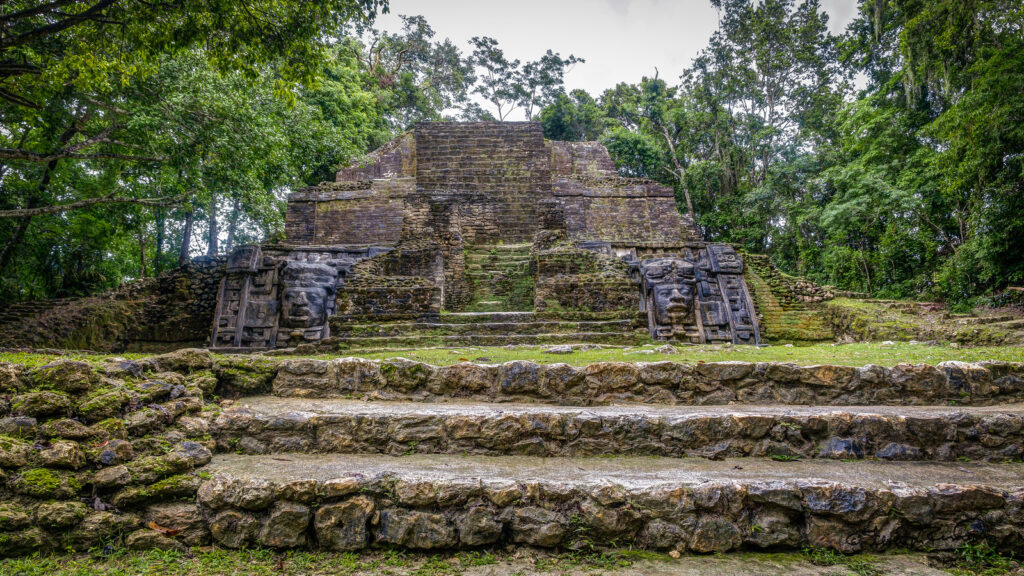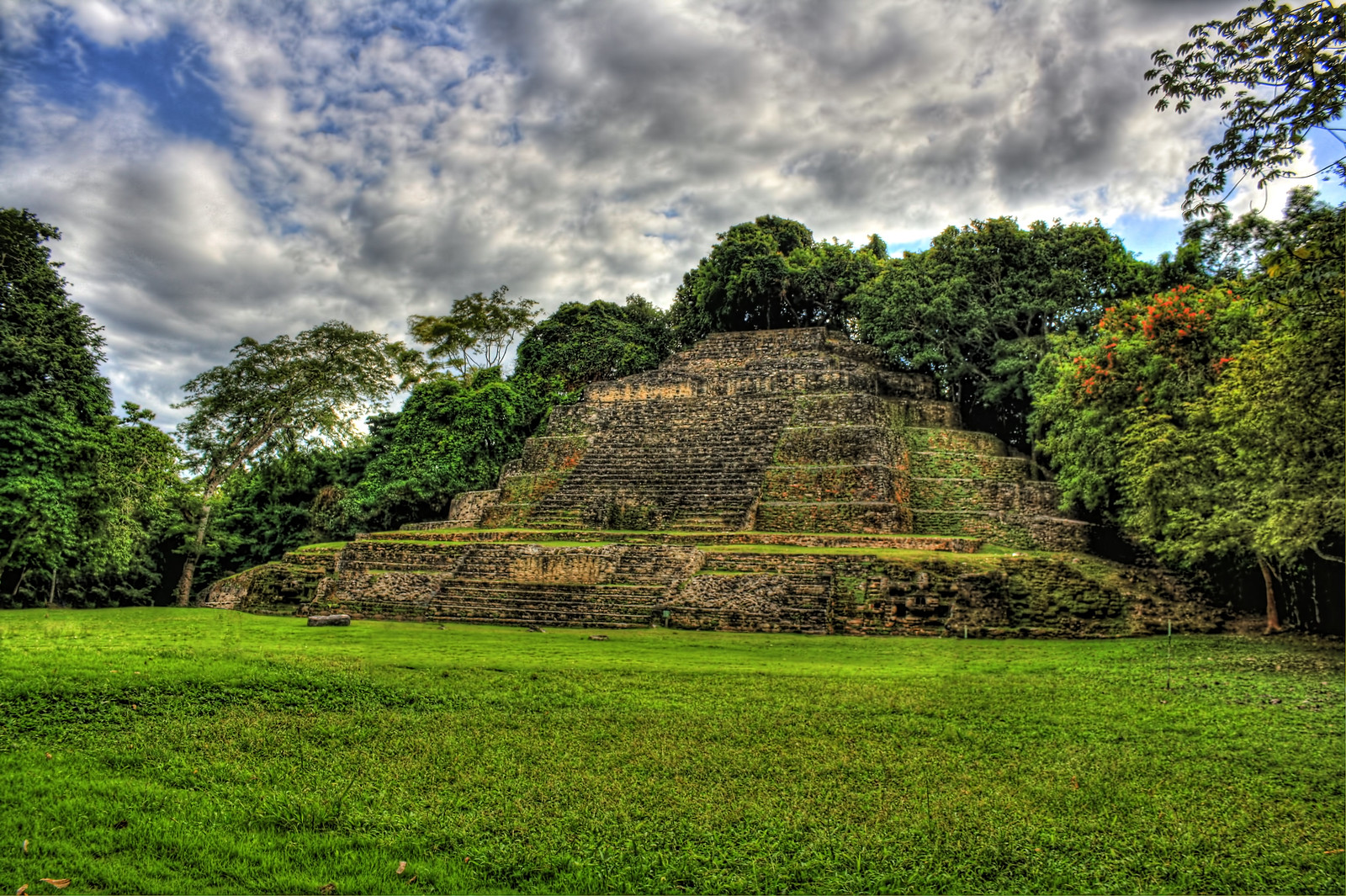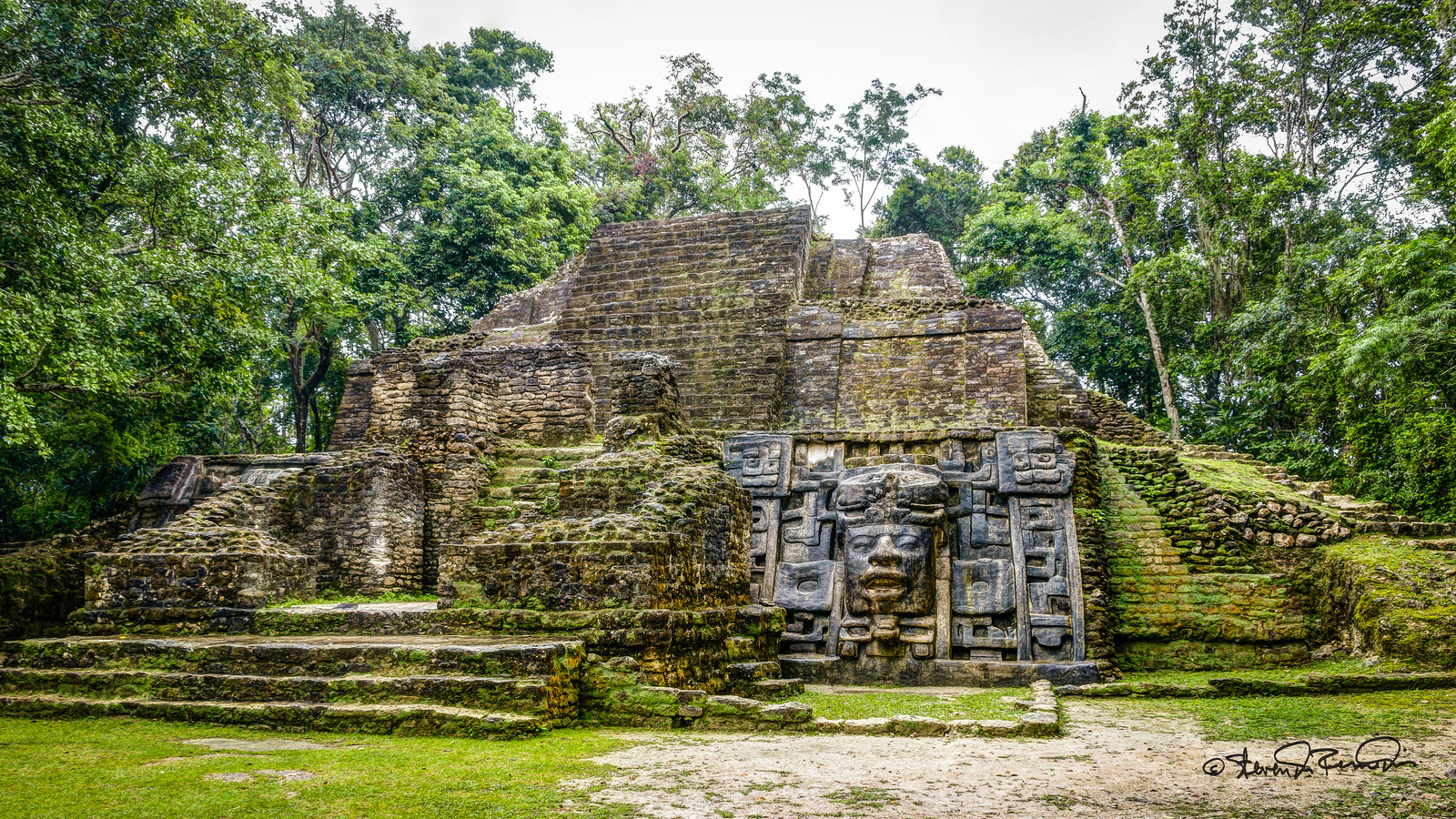Lamanai Ruins: Ancient Maya City in the Jungle
Introduction
Located deep in the dense jungles of northern Belize, the Lamanai Ruins are a testament to the spectacular cultural and architectural achievements of the ancient Maya civilization. Unlike many other Maya sites that were abandoned and forgotten, Lamanai was inhabited for more than 3,000 years, making it one of the longest occupied Maya cities.
The name “Lamanai” translates to “drowning crocodile” in the Mayan language, an apt title given the abundance of crocodiles in the nearby New River and the site’s unique relationship with the water.
This ancient city not only displays the magnificence of Mayan architecture, but also offers a glimpse into their religious practices, daily life, and the ultimate collapse of their society. With its towering temples, intricate carvings and stunning natural surroundings, Lamanai has become one of Belize’s most popular archaeological sites, attracting tourists, historians and archaeologists alike.
A Glimpse into Lamanai’s History
Lamanai was first settled around 1500 BCE and flourished well into the Post-Classic period of Maya civilization, which lasted until the 17th century CE. This long history of occupation makes Lamanai unique compared to other Maya cities, most of which were abandoned by the 10th century AD.
The city flourished due to its strategic location along the New River, which provided a reliable source of water and an important trade route. The river connected Lamanai to other Maya cities and allowed for the transport of goods, including cacao, obsidian, jade, and pottery. Additionally, Lamanai’s proximity to fertile lands made it an agricultural center.
However, Lamanai’s history was not without challenges. Over time, environmental changes, war and political instability began to affect the prosperity of the city. By the time the Spanish arrived in the 16th century, Lamanai had already begun to decline, although it remained one of the last Maya cities to come under European influence.
Exploring the Ruins
Visitors to Lamanai today are treated to a fascinating exploration of the ancient city, with its awe-inspiring temples, plazas and other structures hidden among the dense jungle canopy. Here are some of the most notable features of the site:
The Jaguar Temple
The Jaguar Temple is one of Lamanai’s most famous structures, named for the jaguar motifs that decorate its façade. This temple, like many other Maya structures, served as a religious and political center.
The jaguar, an important symbol in Mayan culture, represents strength, power, and the connection between the physical and spiritual worlds. Climbing the steep steps of the Jaguar Temple offers visitors panoramic views of the surrounding jungle, giving a sense of the grandeur that once defined this ancient city.
The High Temple
The High Temple is the tallest structure at Lamanai, standing at about 33 meters (108 feet). It was likely used for religious ceremonies, and its height would have made it visible from a great distance. Climbing to the top of the High Temple rewards visitors with a breathtaking view of the jungle and the nearby New River Lagoon.
Archaeologists believe this temple was continuously renovated and expanded over the centuries, reflecting Lamanai’s long history of occupation and its importance as a religious center.
The Mask Temple
The mask temple is another highlight of Lamanai, with two large stone masks carved into the front of the structure. These masks, possibly representing ancient Maya gods or rulers, are remarkable for their detail and size.
The temple itself would have been an important religious structure, and the mask suggests that it was a place of great veneration and ceremony. The preservation of these carvings gives visitors a rare opportunity to see the artistic and symbolic craftsmanship of the Maya up close.
Stelae and Altars
During Lamanai, visitors will find stelae and altars, which were used by the Maya for religious and political purposes. Stelae are large stone monuments often carved with images of rulers, gods or important events.
These served as a form of record keeping and storytelling. Meanwhile, altars were used for religious rituals, including offerings to the gods. The intricate carvings and inscriptions on the stelae at Lamanai provide valuable insight into the city’s rulers and its relationship to the wider Maya world.
The Jungle Surroundings
Lamanai’s location in the heart of the forest adds to its mysticism and allure. The site is surrounded by dense vegetation, including towering trees, vines and a variety of wildlife. The jungle setting creates a sense of adventure and discovery as visitors explore the ruins, accompanied by the sounds of howler monkeys and tropical birds.
The New River, which flows nearby, was vital to the Lamanai’s survival and prosperity. It provided water for agriculture, transportation for trade and a source of food through fishing. Even today, visitors can take boat tours along the New River, offering a scenic and peaceful way to reach the ruins while witnessing the region’s rich biodiversity.
The Maya and Nature
The Maya had a deep and spiritual connection to the natural world, which is evident in the layout and design of the Lamanai. The placement of temples and plazas was often determined by celestial events, such as the movement of the sun and stars. It reflects the Maya’s sophisticated understanding of astronomy and their belief in the interconnectedness of the heavens, earth, and underworld.
The abundance of crocodiles in New River further emphasizes the city’s connection with nature. Crocodiles were considered sacred animals in Mayan culture, symbolizing both life and death. The city’s name, Lamanai, meaning “drowned crocodile”, reflects this reverence for the creatures. Even today, visitors can see crocodiles sunbathing by the river, a reminder of the ancient connection between the Maya and their environment.
The Spanish Influence and Decline of Lamanai
Lamanai was one of the last Maya cities to be conquered by the Spanish during the colonial period. In the 16th century, Spanish missionaries arrived and tried to convert the Mayan population to Christianity. They built two Roman Catholic churches in Lamanai, the remains of which can still be seen today. However, Spanish influence was met with resistance, and the Maya people continued to practice their traditional religion alongside newly introduced Christian beliefs.
Despite the efforts of the Spanish, Lamanai, like many other Maya cities, eventually declined due to a combination of factors including disease, warfare, and climate change. By the time the Spanish had fully established their presence in the region, the Lamanai had already begun to fade into history.
Rediscovery and Excavation
Lamanai was largely forgotten until the 20th century when archaeologists began exploring the site and uncovering its rich history. Excavations have revealed much about the city’s architecture, religion and daily life. The discovery of various artifacts, including pottery, tools and jewelry, has provided valuable insight into the culture and economy of the Lamanai.
Efforts have been made in recent decades to preserve the site and protect it from environmental damage and looting. Today, Lamanai is a protected archaeological site, and ongoing research sheds light on its importance in the Maya world.
Visiting Lamanai
A visit to Lamanai is an unforgettable experience that transports visitors back in time to the height of Mayan civilization. A trip to the ruins usually begins with a scenic boat ride along the New River, where passengers can spot crocodiles, iguanas and a variety of bird species. The boat ride itself is a highlight of the trip, offering a peaceful and immersive way to reach the ruins.
Once at the site, visitors can explore the temples, plazas, and other structures at their own pace or with the help of a knowledgeable guide. Climbing ancient temples, walking through the jungle, and seeing intricate carvings up close gives a deeper appreciation of the achievements of the Maya people.
In addition to the archaeological wonders, Lamanai offers opportunities to experience the natural beauty of Belize. The forest setting, wildlife and rivers create a unique environment that blends history with nature.
Conclusion
The Lamanai ruins are a powerful reminder of the enduring legacy of the Maya civilization. Despite its decline, the city’s impressive architecture, artistic achievements, and spiritual significance continue to fascinate visitors and scholars alike. As one of Belize’s most important archaeological sites, Lamanai offers a unique opportunity to explore the ancient world surrounded by the lush beauty of the jungle.
Whether you’re a history buff or looking for a memorable adventure, a visit to Lamanai is sure to leave a lasting impression. The ruins stand as a testament to the ingenuity and resilience of the Maya people, whose influence can still be felt in Belize and beyond.
With its combination of rich history, magnificent architecture, and breathtaking natural surroundings, Lamanai is truly one of the most remarkable archaeological sites in the world.
FAQs
What is Lamanai?
Lamanai is an ancient Maya city located in northern Belize. It was one of the longest-inhabited Maya cities, lasting for over 3,000 years, and is known for its impressive temples and jungle surroundings.
What does the name “Lamanai” mean?
Lamanai means “Submerged Crocodile” in the Maya language. The name reflects the abundance of crocodiles in the nearby New River and the city’s connection to these creatures.
How do I get to the Lamanai Ruins?
Most visitors reach Lamanai by taking a boat tour along the New River from Orange Walk Town. The boat ride offers a scenic and wildlife-rich experience before arriving at the ruins.
Can I climb the temples at Lamanai?
Yes, visitors are allowed to climb some of the temples, such as the High Temple and the Jaguar Temple. These climbs offer stunning views of the jungle and surrounding areas.
